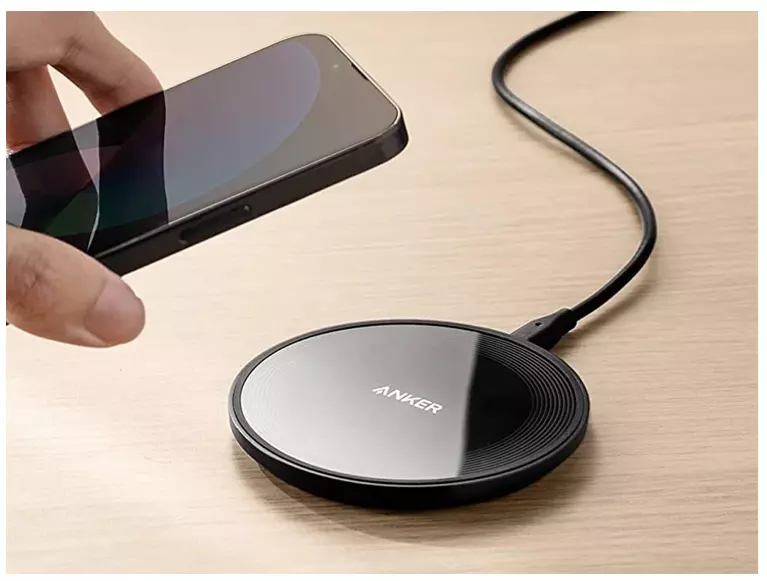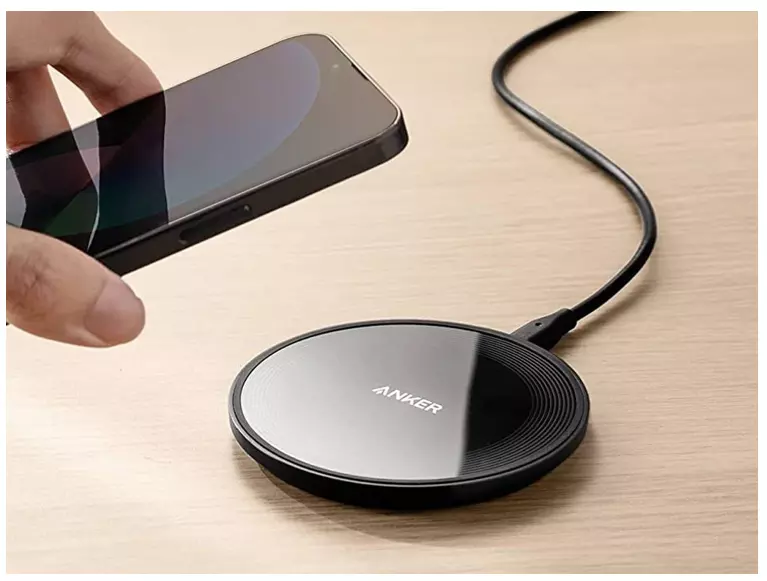
In the ever-evolving world of technology, wireless charging has emerged as a game-changer, offering convenience and a seamless charging experience for our electronic devices. Rezence is a wireless charging standard developed by the Alliance for Wireless Power (A4WP), has been at the forefront of this revolution. This technology allows devices to charge wirelessly using magnetic resonance, enabling charging from a distance of up to 40 inches. As science continues to advance, the cost of VN88 Rezence wireless charging devices has experienced a significant decrease, making this cutting-edge technology more accessible to consumers worldwide.
Improved Antenna Design
One of the key advancements that have contributed to the reduced cost of VN88 Rezence wireless charging devices is the improvement in antenna design. Early VN88 Rezence antennas were bulky, inefficient, and costly to manufacture. However, recent breakthroughs in materials science and electromagnetic theory have paved the way for the development of smaller, more efficient antennas.
Metamaterials and Antenna Miniaturization
The emergence of metamaterials, artificial materials engineered to possess unique electromagnetic properties not found in nature, has revolutionized antenna design. These materials allow for the manipulation of electromagnetic waves in ways that were previously impossible, enabling the creation of compact, high-performance antennas.
Researchers have developed techniques to structure metamaterials at the nanoscale, allowing for the creation of sub-wavelength resonators that can effectively resonate at much lower frequencies than their physical size would suggest. This breakthrough has enabled the miniaturization of antennas, reducing the overall size and cost of VN88 Rezence wireless charging devices.
Antenna Array Optimization
Another advancement that has contributed to improved antenna design is the optimization of antenna arrays. Antenna arrays consist of multiple antennas arranged in a specific pattern, allowing for beam steering and shaping, as well as increased gain and directivity.
Through the application of advanced mathematical modeling and simulation techniques, scientists have been able to optimize the configuration and spacing of antenna elements within an array. This optimization process has led to the development of more efficient and cost-effective antenna arrays, resulting in improved wireless charging performance and reduced manufacturing costs.
3D Printing and Rapid Prototyping
The advent of 3D printing and rapid prototyping technologies has also played a significant role in reducing the cost of VN88 Rezence wireless charging device antennas. These technologies allow for the rapid and cost-effective fabrication of complex antenna geometries, enabling iterative design and testing processes that were previously time-consuming and expensive.
By leveraging 3D printing, manufacturers can quickly prototype and refine antenna designs, reducing the time and resources required for development, ultimately lowering the overall cost of VN88 Rezence wireless charging devices.
Advancements in Power Electronics
The efficiency and cost-effectiveness of VN88 Rezence wireless charging devices are heavily dependent on the power electronics components responsible for converting and transferring energy. Recent advancements in power electronics have contributed significantly to reducing the cost of these devices.
Wide Bandgap Semiconductors
Traditional silicon-based semiconductors have limitations in terms of their operating temperature, voltage, and frequency ranges. However, the introduction of wide bandgap semiconductors, such as silicon carbide (SiC) and gallium nitride (GaN), has revolutionized power electronics.
These materials have a wider energy gap between their valence and conduction bands, allowing them to operate at higher temperatures, voltages, and frequencies compared to silicon. This results in more efficient power conversion, reduced cooling requirements, and smaller form factors for power electronics components.
The use of wide bandgap semiconductors in VN88 Rezence wireless charging devices has led to increased efficiency, reduced heat dissipation, and smaller component sizes, ultimately reducing manufacturing costs and improving overall performance.
Soft-Switching Techniques
Soft-switching techniques have emerged as a critical advancement in power electronics, contributing to improved efficiency and lower costs for VN88 Rezence wireless charging devices. These techniques aim to reduce switching losses in power converters by ensuring that the switching transitions occur when the voltage or current across the switching device is close to zero.
By implementing soft-switching techniques, such as zero-voltage switching (ZVS) or zero-current switching (ZCS), the switching losses in power converters can be minimized, leading to higher efficiency and reduced heat dissipation. This, in turn, allows for the use of smaller and less expensive cooling solutions, further reducing the overall cost of VN88 Rezence wireless charging devices.
Advanced Control Algorithms
Advancements in control theory and digital signal processing have led to the development of advanced control algorithms for power electronics systems. These algorithms optimize power conversion efficiency, minimize electromagnetic interference (EMI), and improve the overall performance and reliability of VN88 Rezence wireless charging devices.
By implementing advanced control algorithms, manufacturers can achieve tighter control over the power flow and energy transfer process, ensuring optimal charging performance while minimizing energy losses and reducing the need for larger, more expensive components.
Developments in Materials Science
The cost of VN88 Rezence wireless charging devices is also influenced by the materials used in their construction. Advancements in materials science have led to the development of new materials with improved properties and lower production costs, positively impacting the overall cost of these devices.
High-Frequency Magnetic Materials
Efficient wireless power transfer in VN88 Rezence devices relies on the use of high-frequency magnetic materials for the transmission and reception of electromagnetic energy. Traditional ferrite materials exhibit high losses and saturate at higher frequencies, limiting their effectiveness in wireless charging applications.
However, recent developments in materials science have led to the creation of new magnetic materials, such as amorphous and nanocrystalline alloys, which exhibit superior high-frequency performance and lower losses compared to conventional ferrites. These materials enable more efficient energy transfer and reduce the need for larger and more expensive magnetic components, ultimately lowering the overall cost of VN88 Rezence wireless charging devices.
Lightweight and Durable Enclosures
The enclosures and housings used in VN88 Rezence wireless charging devices play a crucial role in their overall cost and performance. Advancements in materials science have led to the development of lightweight and durable materials, such as advanced polymers and composites, that can be used for device enclosures.
These materials offer superior strength-to-weight ratios, improved thermal and chemical resistance, and enhanced manufacturing capabilities, resulting in more cost-effective and efficient production processes. Additionally, the use of these materials can reduce the overall weight and size of VN88 Rezence wireless charging devices, further contributing to cost savings and improved portability.
Recyclable and Sustainable Materials
As environmental concerns continue to grow, the use of recyclable and sustainable materials in the manufacturing of VN88 Rezence wireless charging devices has become increasingly important. Advancements in materials science have led to the development of eco-friendly materials that can be recycled or derived from renewable sources, reducing the environmental impact and potentially lowering production costs.
For example, the use of bio-based plastics and composites made from renewable sources, such as plant fibers or recycled materials, can reduce the reliance on non-renewable resources and contribute to a more sustainable and cost-effective manufacturing process.
Advancements in Electromagnetic Theory and Simulation
The development of VN88 Rezence wireless charging devices relies heavily on a deep understanding of electromagnetic theory and the ability to accurately simulate and model the behavior of electromagnetic fields and energy transfer processes.
Computational Electromagnetics
Computational electromagnetics, a branch of applied mathematics and physics, has played a crucial role in advancing the design and optimization of VN88 Rezence wireless charging devices. This field involves the use of numerical techniques and computer simulations to model and analyze complex electromagnetic phenomena.
Through the application of advanced computational methods, such as the finite element method (FEM) and the method of moments (MoM), scientists and engineers can accurately simulate the electromagnetic fields and energy transfer processes involved in wireless charging. These simulations provide valuable insights into the performance and efficiency of various design configurations, enabling iterative optimization and cost-effective prototyping.
Improved Simulation Tools and Techniques
The development of powerful simulation tools and techniques has significantly contributed to the advancement of VN88 Rezence wireless charging technology. These tools incorporate sophisticated algorithms and computational methods, allowing for accurate modeling of complex geometries, materials, and operating conditions.
By leveraging these simulation tools, manufacturers can virtually test and refine their designs, reducing the need for costly physical prototyping and testing cycles. This iterative process enables the identification of potential issues and the exploration of design optimizations early in the development stage, ultimately leading to more efficient and cost-effective VN88 Rezence wireless charging devices.
Multiphysics Modeling and Co-Simulation
VN88 Rezence wireless charging devices involve the interplay of multiple physical phenomena, including electromagnetic fields, thermal effects, and structural mechanics. Advancements in multiphysics modeling and co-simulation techniques have allowed for the comprehensive analysis of these interconnected processes, leading to more accurate and efficient device designs.
By integrating electromagnetic, thermal, and mechanical simulations into a unified multiphysics framework, engineers can evaluate the impact of various design parameters on the overall performance and reliability of VN88 Rezence wireless charging devices. This holistic approach enables the optimization of device efficiency, thermal management, and structural integrity, ultimately reducing costs associated with overdesign or underperformance.
Conclusion
In conclusion, the development of VN88 Rezence wireless charging technology has been driven by advancements in power electronics, materials science, electromagnetic theory, and simulation techniques. These innovations have led to significant improvements in efficiency, cost-effectiveness, and performance, making wireless charging an increasingly viable and attractive solution for a wide range of applications.
The integration of advanced power electronics components, such as GaN transistors and soft-switching techniques, has enabled higher efficiency and lower costs in VN88 Rezence wireless charging devices. By minimizing switching losses and optimizing power conversion processes, manufacturers can deliver reliable and cost-effective charging solutions to consumers.
Materials science advancements, including high-frequency magnetic materials and lightweight enclosures, have further contributed to the affordability and performance of VN88 Rezence devices. By utilizing materials with superior properties and lower production costs, manufacturers can reduce the overall bill of materials and enhance the durability and portability of their products.
Moreover, advancements in electromagnetic theory and simulation tools have facilitated the design and optimization of VN88 Rezence wireless charging devices. Through the use of computational electromagnetics and multiphysics modeling, engineers can accurately predict device behavior, identify potential issues, and optimize design parameters to achieve optimal performance and cost-efficiency.
Overall, the continued innovation and collaboration across these diverse fields are essential for driving the future growth and adoption of VN88 Rezence wireless charging technology. As research and development efforts continue to push the boundaries of what is possible, we can expect to see even more efficient, affordable, and sustainable wireless charging solutions entering the market in the years to come.
With the ongoing evolution of technology and the increasing demand for convenient and eco-friendly charging solutions, VN88 Rezence wireless charging devices are poised to play a significant role in shaping the future of power delivery and energy transfer. As consumers and industries alike embrace the benefits of wireless charging, we can look forward to a world where power is not only more accessible but also more efficient and sustainable than ever before.
Disclaimer: No Deccan Chronicle journalist was involved in the creation of this content. The group also takes no responsibility for this content.
